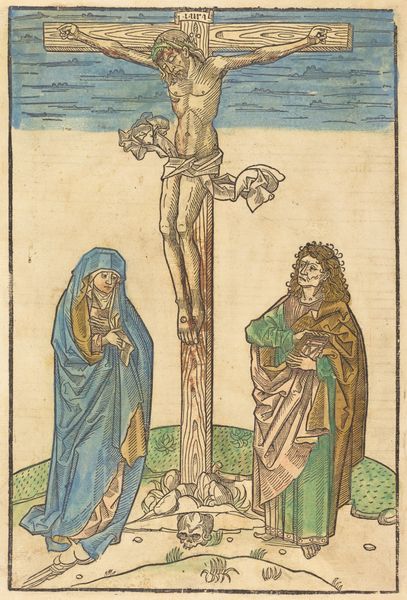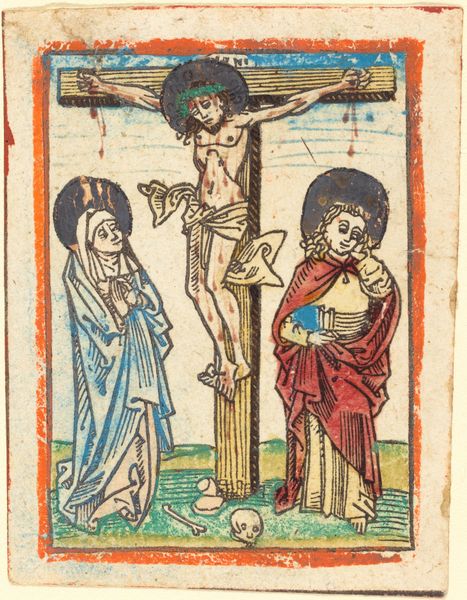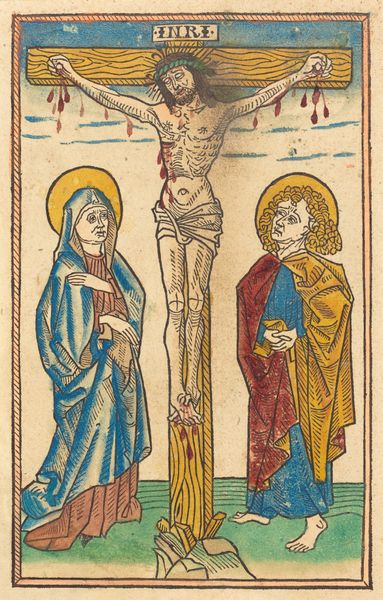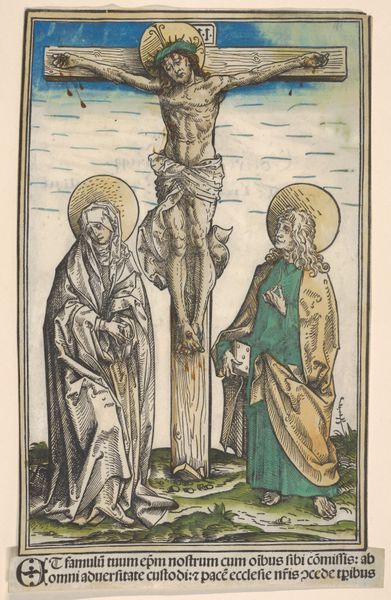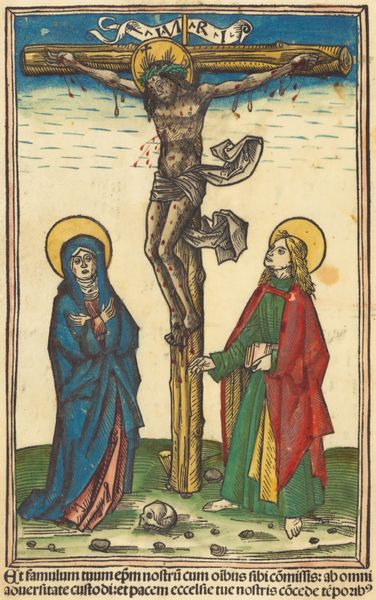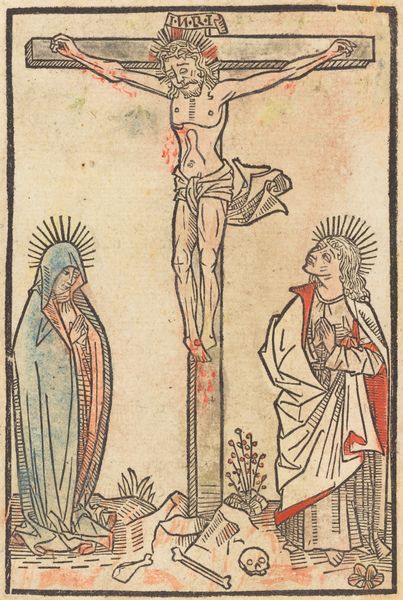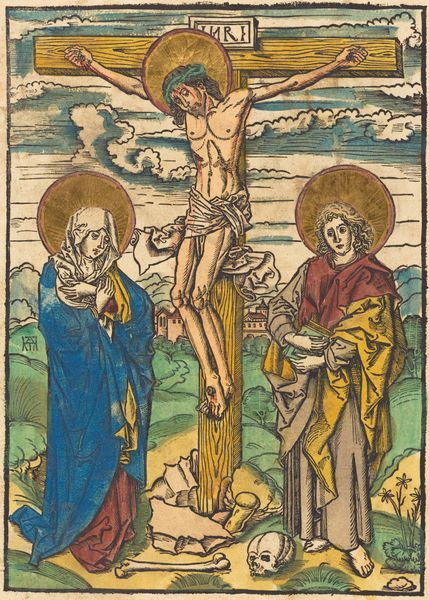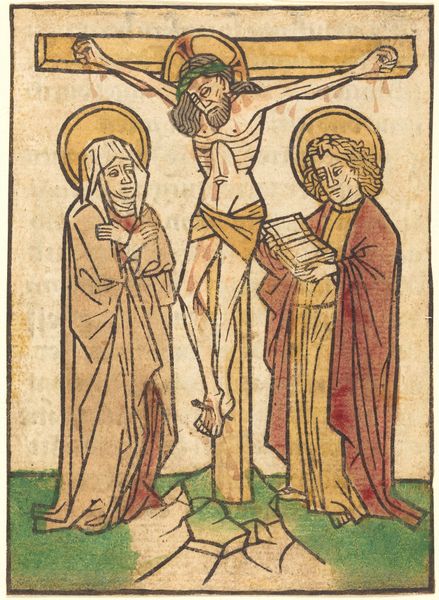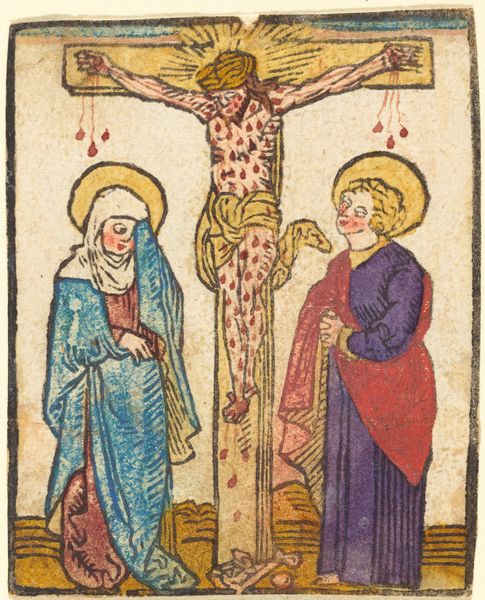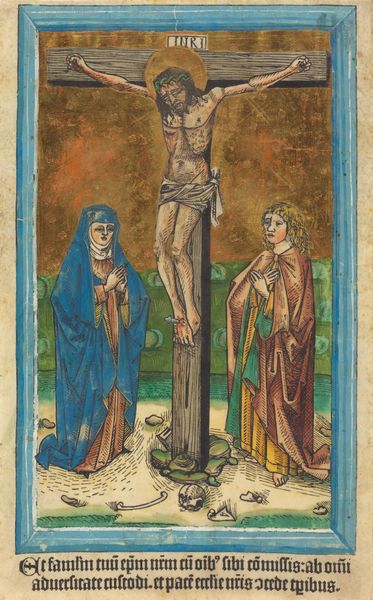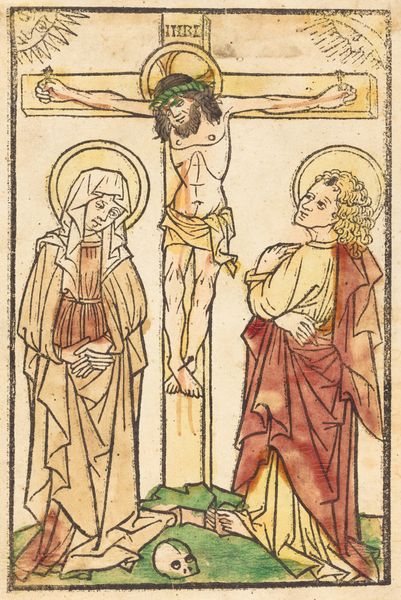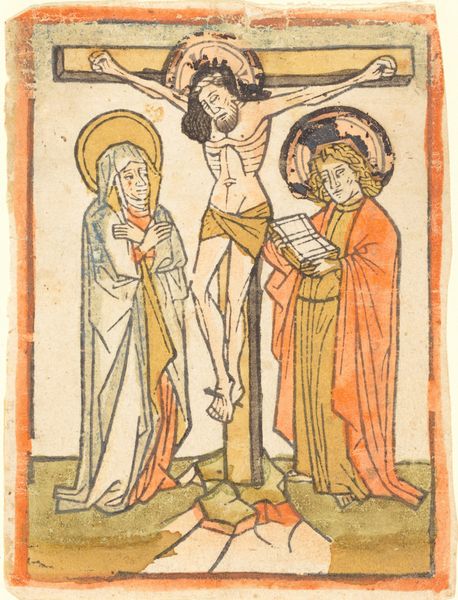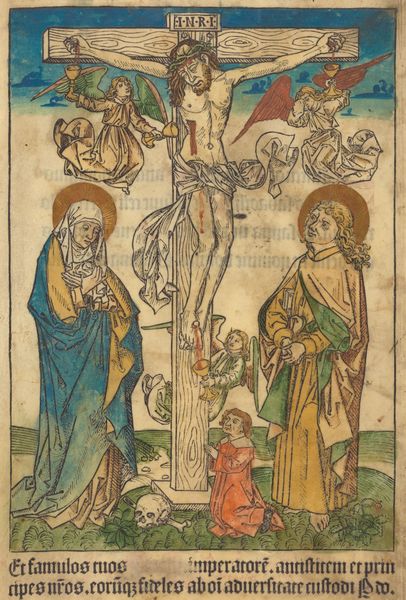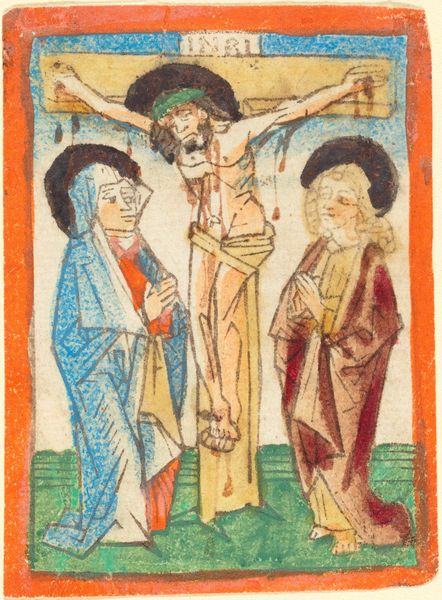
print, woodcut
#
medieval
# print
#
figuration
#
woodcut
#
line
#
history-painting
Copyright: National Gallery of Art: CC0 1.0
Curator: Let's discuss this compelling piece titled "Christ on the Cross," a woodcut that dates back to around 1500, attributed to an anonymous artist. Editor: The immediate impression is one of stark suffering. The limited color palette heightens the drama, pushing the focus to the agonized figure on the cross. Curator: Indeed. Being a woodcut print, consider the material and production involved. Each line, each shadow was carefully carved into a block of wood. This speaks volumes about labor, artistic planning, and the social accessibility of religious imagery at the time, since it could be reproduced in large numbers. Editor: Precisely. The cultural context here is inescapable. This image comes on the heels of an early rise of humanism. There is an emphasis here on pathos, an emphasis on the humanity of Christ and on his followers standing in support and mourning below, emphasizing an earthly, grounded empathy from those who gaze at the cross, and a more broadly accessible form of worship for people that perhaps, only a hundred years prior, might have considered such a symbol to be inapproachable. Curator: The style also interests me. The thick, decisive lines define forms and evoke texture, which contrasts beautifully with areas left blank. Even the choice to print this in multiple colors – albeit a limited range – demanded multiple blocks, and therefore a skilled level of labor to align properly when printing. This emphasizes the artisanal qualities in contrast to mass produced icons. Editor: Let's look deeper into what is communicated here. Notice how the skull at the foot of the cross alludes to Adam, signifying Christ's sacrifice as redemption for humanity’s sins, yet simultaneously we confront how profoundly this violence shaped not just art but the very framework of the society. The Virgin Mary, cloaked in blue representing faithfulness, contrasts with the open despair etched on the other figure’s face. It serves as a mirror, reflecting diverse reactions to unimaginable grief and an image to support various responses from its audience. Curator: Agreed. And from a materials perspective, it’s fascinating how a relatively inexpensive medium like woodcut was used to convey such emotionally powerful religious themes, making such depictions accessible to a broader populace through prints. Editor: Looking at the long term social impacts and history, religious artworks have had a performative social power. We see its lasting legacy in political movements, shaping social and spiritual life for centuries after its making. The woodcut in that way represents a complex intersection of faith, production and influence. Curator: It’s true, this analysis truly highlights the ingenuity present in both material and symbolic choices made by the anonymous artist of this poignant work. Editor: Absolutely. By interrogating art as part of broader cultural discourses, the work urges us to engage thoughtfully and empathetically with history, both for what it shows us in the past and present.
Comments
No comments
Be the first to comment and join the conversation on the ultimate creative platform.
